marquetry, yosegi zaiku
Marquetry: The Mysteriously Beautiful Woodwork!
James Lau
Posted on April 10, 2024
Share:
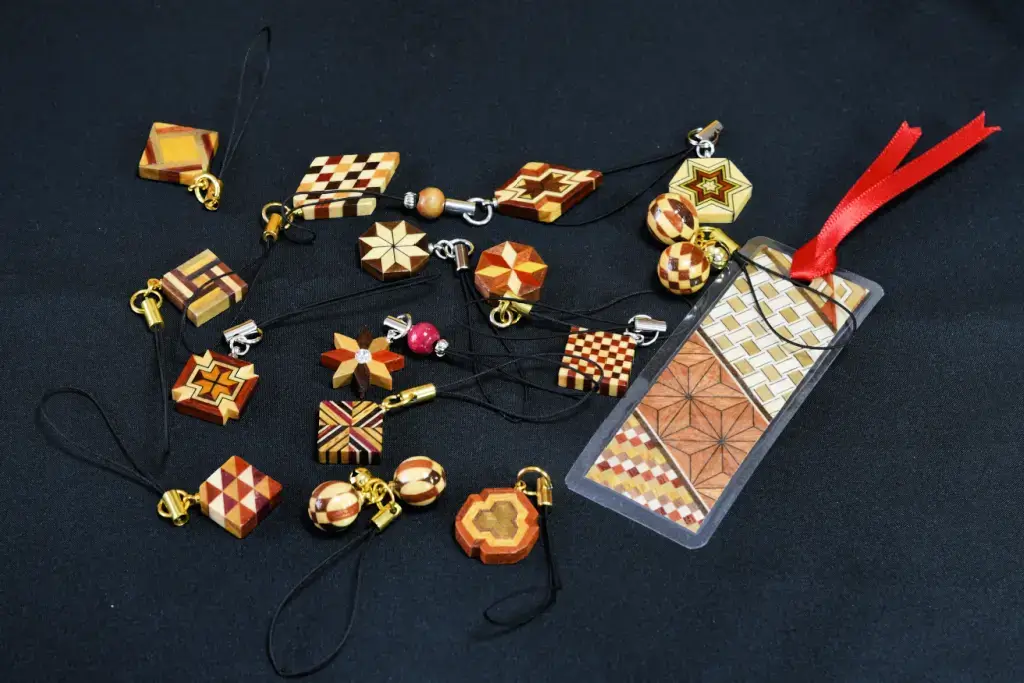
Discover the world of Japanese marquetry, where traditions meet modern craftsmanship. From intricate puzzle boxes to exquisite furniture, Hakone marquetry captivates with its blend of natural colors and delicate patterns! Uncover the mystery and beauty of this traditional art form, adored by collectors and travelers!
What is marquetry?
Japanese marquetry, or yosegi zaiku, is a traditional woodworking technique from Japan. It generally involves combining different woods to create patterns using their natural colors. Common patterns include stripes, checkerboards, and more. As a matter of fact, the Hakone Ekiden, an annual race, awards the winning team trophies made of yosegi zaiku.
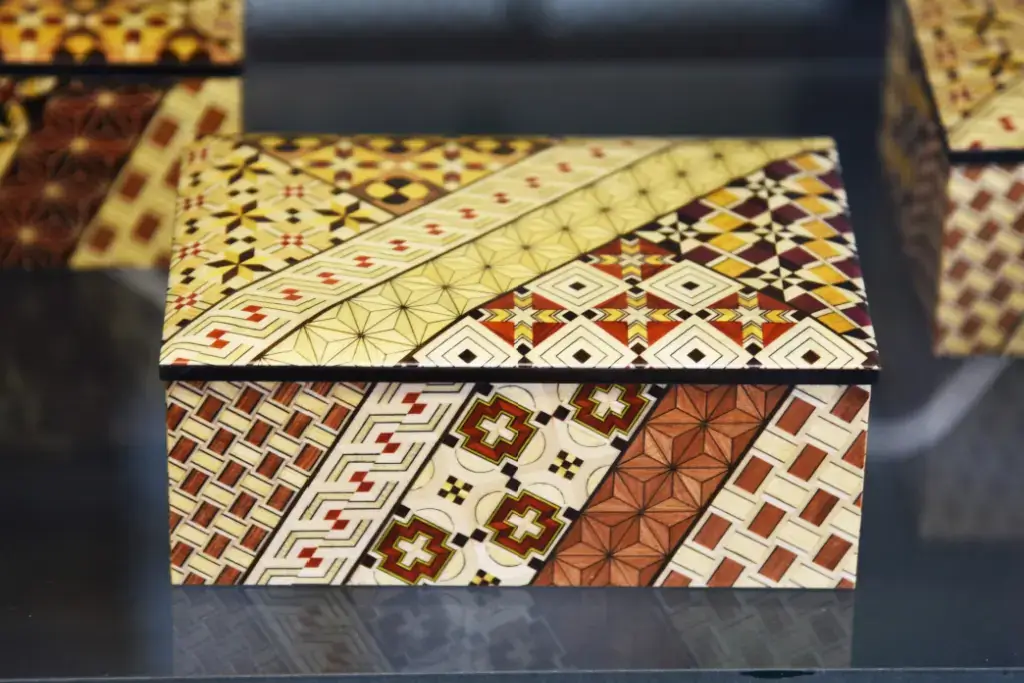
Yosegi zaiku uses wood sourced from different regions. For example, trees like magnolia, camphor, cherry, dogwood, and buried woods are “jindai”. They have unique colors from centuries of natural aging and are very common. After harvesting, the wood is left to dry naturally for several years before being crafted. As a result, this craft shows the beauty of natural wood colors and patterns, making it a popular art in Japan.
How did it develop in Japan?
Marquetry has been around in Japan since the Nara period, becoming popular with the introduction of Buddhism and the demand for complex woodwork. In the Edo period, Jinbei Ishikawa’s craftsman transformed the art form by combining different colored woods to create intricate designs. This technique began in the mountain village of Hatajuku, along the Tokaido highway between Tokyo and Kyoto.
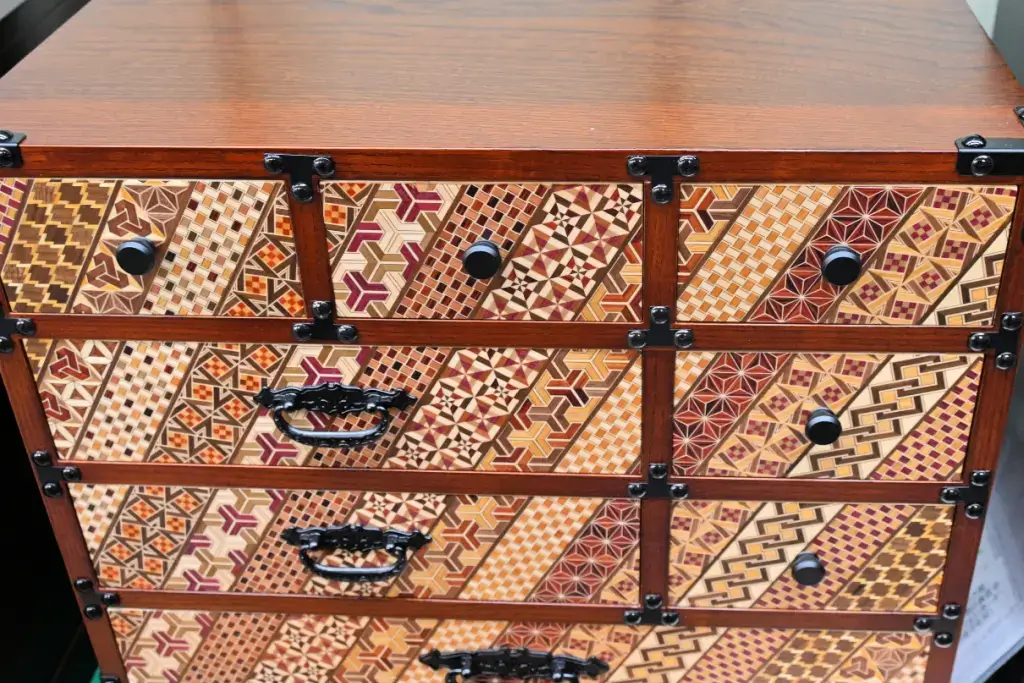
The craft later became associated with Yumoto in Hakone, Kanagawa Prefecture, thanks to the area’s many varieties of trees and skilled craftsmen. Marquetry became a popular souvenir for travelers, and the craft continued to evolve with more complex patterns created in the Meiji era. Today, the craft continues to blend traditional techniques with modern delights!
How is marquetry crafted?
One way to craft yosegi zaiku is “zuku-tsukuri,” which shaves thin sheets of wood to attach to existing boxes. Artisans first cut wood blocks into shapes, slice them into individual pieces, and place them into a pattern known as a tanegi board. Each piece must fit perfectly. They then scrap the tanegi board to produce paper-thin slices called taneita, decoratively glued onto wooden products like boxes.
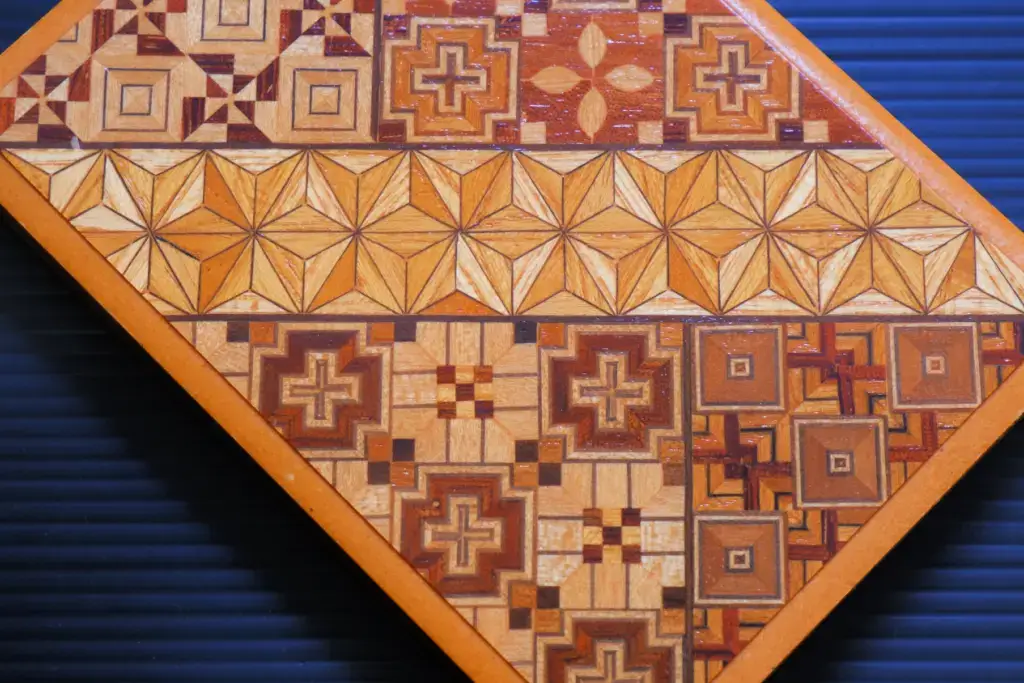
Mastering yosegi zaiku takes around ten years, requiring extensive training, attention to detail, creativity, and knowledge. A final lacquer coat adds durability and a glossy finish, making the final product last long. Generally, various types of wood are used in yosegi zaiku, each adding unique colors and patterns to the final pieces. With techniques evolving over time, each work produced is admired by people worldwide.
Are you looking for unique snacks from places like Hakone? Check out Sakuraco! Sakuraco delivers traditional Japanese snacks, teas, sweets, and snacks from local Japanese makers directly to your door so you can enjoy the latest treats directly from Japan!
What makes it unique from other types of woodwork?
Generally, marquetry is a fantastic art form that involves sticking thin wood pieces onto something to make a neat design. It’s not the same as inlay when you put things like metal or stone into a surface instead. This particular kind of marquetry from Hakone is fantastic for making puzzle boxes called “himitsu-bako”. These boxes also look like they don’t have any way to open them, which makes it a fun challenge to try and find out how to get inside.
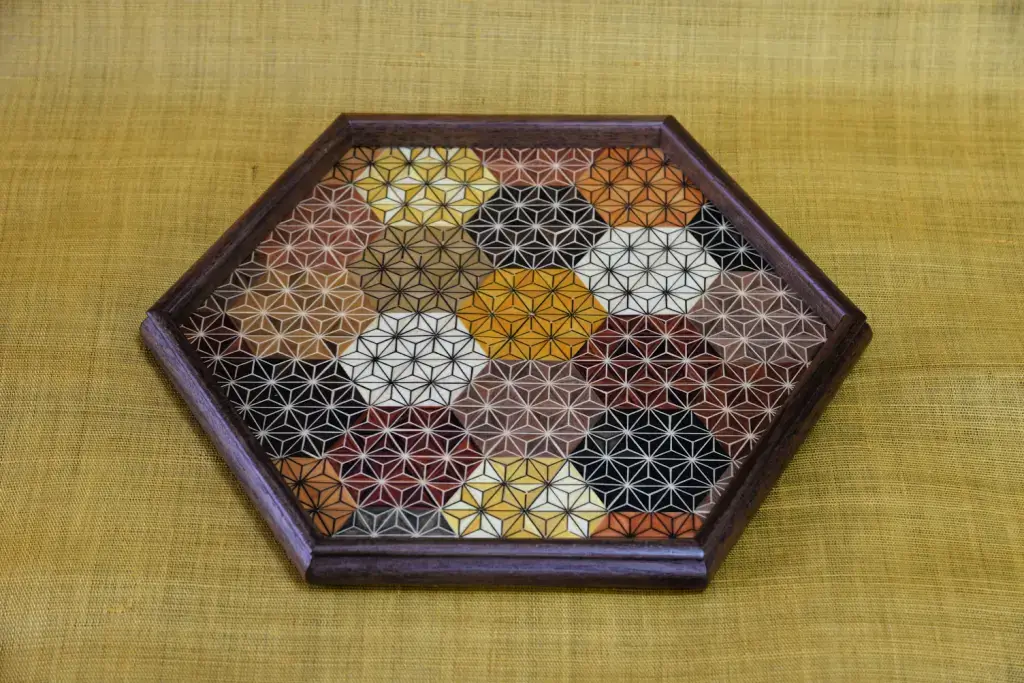
The only way to unlock them is by meticulously following a sequence of steps, pushing or pulling specific sections or panels in the correct order. Some of the most complex puzzle boxes require up to sixty movements. Tourists often purchase these as souvenirs for their intricate designs and the challenges they pose, making them both visually appealing and a fun brain teaser.
Where can I find marquetry in Hakone?
In 2005, young artisans from diverse backgrounds formed the Zoukibayashi Group to showcase their local craftsmanship. These artisans aimed to modernize traditional techniques and expand their market. The Odawara Hakone Traditional Wood Marquetry Co-operative Association also works to preserve these techniques and brand its members’ works as traditional marquetry pieces.
Hakone marquetry ranges from traditional furniture to modern souvenirs, captivating collectors worldwide. Recognized as a traditional craft in 1984, yosegi zaiku has evolved from roadside souvenirs to works of art, appreciated for their craftsmanship and unique designs. Today, the area boasts around 50 artisans specializing in yosegi zaiku, with most of Japan’s marquetry coming from there.

Why is marquetry important?
Because of its complexity, marquetry is essential as a form of art and cultural heritage. Originating in the Nara period and evolving with the demand for intricate woodwork, the art grew as artisans honed their skills. Its development and association with Hakone made it a unique souvenir for travelers and a symbol of Japanese craftsmanship. The ability to blend traditional techniques with modern influences reflects a commitment to preserving its heritage.
All in all, yosegi zaiku shows the mastery of craftsmanship and the beauty of natural materials. The intricate patterns and designs crafted from various types of wood undoubtedly show the artisans’ dedication to their craft and their respect for nature. Each piece undoubtedly tells a story of careful craftsmanship and artistic innovation, charming travelers worldwide with beauty and elegance. Have you ever seen Hakone Marquetry before? Have you bought a piece? Let us know in the comments below!

Discover authentic flavors with Sakuraco
Get Sakuraco 

Discover authentic flavors with Sakuraco
Get Sakuraco 
Related Articles

Steam Train in Shizuoka: Riding the Oigawa Railway
For travelers who love history, beautiful views, and cozy retro vibes, this steam train is one of Shizuoka’s most charming treasures, with some of the best views. If you want to know more about this train, keep reading below!

Nara Japan: The Amazing Legend of the Sacred Dragon
In Japanese culture, dragons are spiritual beings that represent strength, prosperity, and a harmonious balance with the natural forces. Nara, Japan, has a unique story associated with sacred ponds and revered shrines throughout the region.

Nambu Tekki: Morioka’s Amazing Iron Craft
In the historic city of Morioka, Iwate Prefecture, a craft with over 400 years of history continues to captivate with its rustic beauty and practical charm. Nambu tekki, or Nambu cast iron, refers to traditional ironware, such as teapots, kettles, and decorative pieces, that embody the spirit of Tohoku craftsmanship.

Ebisu: The Cheerful Guardian of Luck and Prosperity
Religion in Japan involves a dizzying array of spirits and beings. These gods are inspired by ancient tales and used to symbolize nature’s bounty. However, they also profoundly impact daily life and are often sought out for help in challenging times



